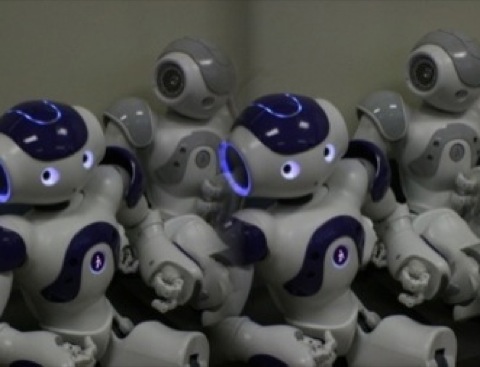Not only single intelligent robots, but also team of robots! At ISTC the Laboratory of Autonomous Robotics and Artificial Life (LARAL) works on the creation of groups of physically assembled robots capable of cooperating.
The attempt to evolve complete artificial creatures is a key long-term goal for Artificial Intelligence. Cooperation between robots is one of the main objectives, since it implies high levels of interaction and communication. The Laboratory of Autonomous Robotics and Artificial Life (LARAL) is working on the development of robots capable of physically assembling and solving tasks that cannot be solved by single robots. These studies are based on a method that allows co-evolving the morphology and the control system of realistically simulated robots. As it happens in nature, the model creates a robotic genotype that does not directly specify the characteristics of the creatures but rather the "growing" rules. So all the robots evolve in their environment without a centralized control: they develop functionality on their own, and at the same time they learn to combine together, adapting to different situations.
Thus LARAL team is giving important contributes to the field of swarm robotics, which studies groups of robots tightly interacting and cooperating to achieve common goals. The group's claim is that behaviour is a complex system emerging from the interactions between the agent and the external environment. This is the starting assumption for the building of a swarm of robots: all the artificial creatures are generated with a developmental process, which make them able to evolve according to the different situations they have to cope with. Robots can therefore perform tasks such as displacement, exploration or object transportation under different environments and operating conditions. In search of a high degree of mobility, versatility and robustness, LARAL researchers used the social insect metaphor and the self-assembling abilities displayed when they transport objects or build nests as a model. This led to the design and implementation of robotic systems composed of swarms of robots that interact and cooperate to reach their goals.
A future application of swarm robotics technology is its use for human assistance, in health-care institutions or domestic environments.
Contact: Stefano Nolfi
ISTC Group: Laboratory of Autonomous Robotics and Artificial Life


